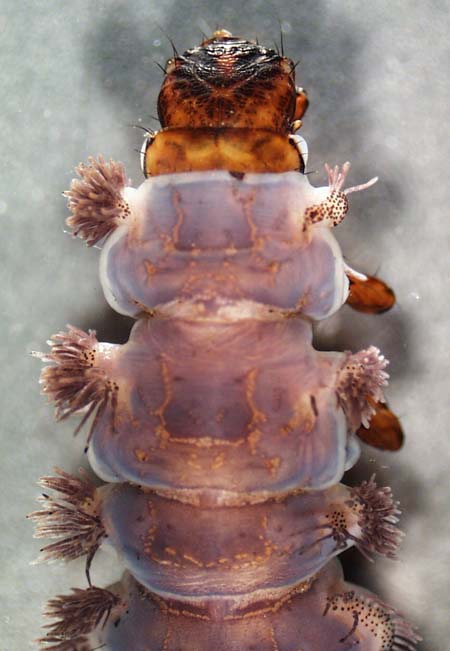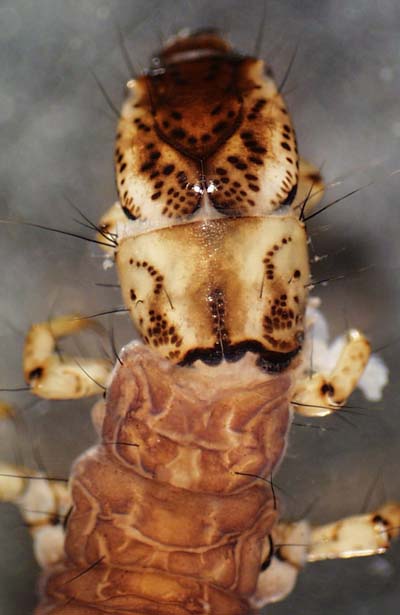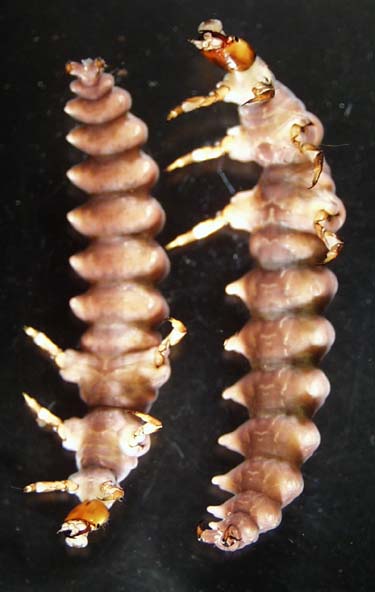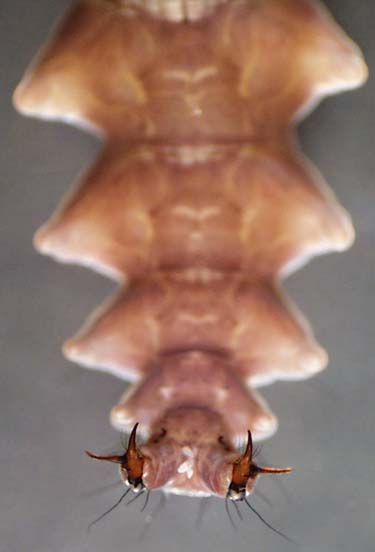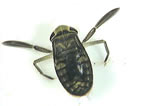
THE XERCES SOCIETY FOR INVERTEBRATE CONSERVATION Aquatic Invertebrates in Pacific Northwest Freshwater Wetlands |
| Identify taxa |
Rhyacophilidae (free-living caddisflies, green rock worms) |
The Rhyacophilidae are unique among Pacific Northwest caddisflies. Live specimens are a dramatic green, and they live without a portable case or fixed shelter. Rhyacophilids are not common in wetlands, as they only live in fast flowing water. They cling to the underside of rocks and attach a silk thread to the substrate to secure them in swift currents. Rhyacophilids are predominantly predatory, in contrast to the majority of caddisfly families that eat plants or organic debris. The Rhyacophilidae are quite sensitive to human disturbance, partly because of their lifestyle and environmental requirements. There are two genera of Rhyacophilids, one (Himalopsyche) with a single, very rare species and the other (Rhyacophila) with dozens of species and a wide range of environmental requirements. It's common to find brownish, oblong, transparent cocoons with green rock worm larvae or pupae inside. The larvae pupate by piling pebbles around themselves on the underside of a rock, then spinning a protective cocoon (another common name is "rock rollers"). With a good dissecting microscope and a steady hand, identification of mature Rhyacophila species and species groups can be fun. However, early instars may lack some distinguishing characteristics and can be difficult to identify. Much of the information on this page is modified from unpublished documents by caddisfly experts Bob Wisseman (Aquatic Biology Associates, Inc.) and Skip Smith (Central Washington University, emeritus). |
Size: large to xlarge |
|
© 2007 Xerces Society
Contact info@xerces.org

